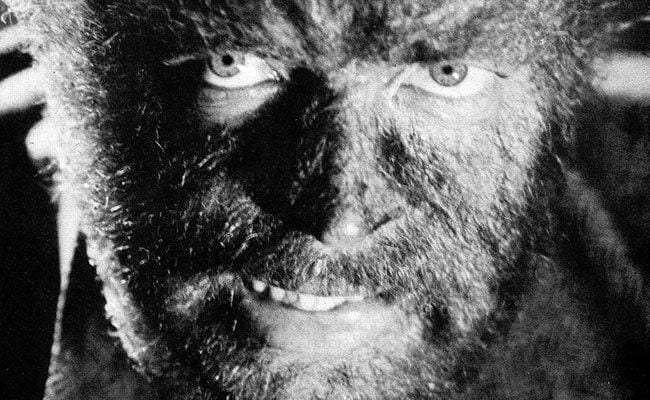
These Blu-rays upgrade and preserve the contents of two DVDs from a box called Fox Horror Classics, reviewed by PopMatters back in 2007. You needn’t exert yourself to the clicking of links, however; your tireless reviewer has no compunction about recapitulating his erstwhile insights here.
Both films are directed by John Brahm, an expressionistically gifted stylist who emigrated to Hollywood from Hitler’s Germany and whose career flowered in TV, where he directed episodes of a virtual encyclopedia of classic series. His visual talent might be why he was tapped for the B-picture The Undying Monster, one of 20th Century Fox’s few attempts to cash in on the horror genre that was making so much money for Universal and RKO in the ‘40s, especially with movies about people who transform into animals.
Based on a novel by Jessie Douglas Kerruish, this film feels like an X Files episode that’s 50 years ahead of time, as a wisecracking team of male and female detectives (James Ellison, Heather Thatcher) investigates a pseudo-Baskerville mystery. The woman puts up with guff about feminine intuition as she goes about her sleuthing. The man smokes pipes and takes the credit.
While widely advertised as a werewolf movie, that lycanthrope is the most problematic element of a beautifully atmospheric film. The final scene shows a wolfman’s face crudely and clumsily superimposed on an actor in post-production. The effect allows a transformation when the pasted-over segment is removed, although it looks more like a bit of debris floating on the film. The real trouble is that the dialogue insists the werewolf obsession is strictly psychological, a “kink in the brain”.
The impression I receive is of a last-minute decision by the front office to insist on a “real” monster just like over at Universal, even though this kink-in-the-brain version was already in the can, but there are a few other shots where the makeup is also seen. Genre expert Tom Weaver observes that the dialogue is faithful to the novel and speculates that it was done this way for the British release because they objected to horror movies. Surely, it would have made more sense to remove the pasted-over head in England. Whatever the case, it’s a puzzlement, and I respectfully demur from Weaver’s opinion that nobody’s ever discussed this problem before.
We are wholly independent, with no corporate backers.
We can’t survive without your support.
Also appearing are Heather Angel as a distressed damsel and John Howard as the man with a problem. The real star is Lucien Ballard’s high-contrast photography, full of virtuoso movements. There are depth-of-field shots with an almost uncannily 3-D presence, especially one with two distant figures passing beneath a Caspar David Friedrich tree, petrified in the act of unfurling its jagged arm.

Laird Cregar and Merle Oberon in The Lodger (1944)
This project led Brahm to the bigger and better The Lodger (1944), based on Marie Belloc Lowndes’ famous novel and play about Jack the Ripper, which made her a seminal author in the psycho-killer sweepstakes. Merle Oberon headlines as the heroine in danger, with Ballard again providing the great photography. Alfred Hitchcock had directed a brilliant silent version that changed the story significantly, while this remake is effectively the first faithful filming of a story about people who come to suspect that their building’s unassuming tenant is the bloodthirsty murderer.
This movie was such a hit that Brahm more or less remade it right away as Hangover Square (1945), another Victorian thriller that reunites the same scriptwriter (Barré Lyndon), the same magnetic stars who died too soon (Laird Cregar, George Sanders), and basically the same story with Cregar playing variations on the same twitchy, pathetic, frightening, soft-spoken, cultivated, hulking psychopath. He might have faced future typecasting, but he was dead before the film came out.
Aside from the upgrade to Blu-ray resolution, both discs preserve the old DVD extras. These are primarily a piece about Brahm with the former movie, and an audio commentary, a making-of, and a radio version of the latter movie. Both have trailers and restoration comparisons with the 2007 releases.
In addition, both discs offer new extras to reward the double-dippers. Undying Monster now has a commentary by Tom Weaver, one of the most informative historians on classic genre films, and he’s joined by a few guests, including Brahm’s daughter. This commentary is literally twice as long as the movie, requiring an A and a B track. An alternate title sequence is also listed on the package, but I couldn’t find it. The Lodger now boasts a second commentary track by Cregar biographer Gregory William Mank. For those who haven’t indulged before in these creepy exercises in black and white ’40s style, now is the time.

